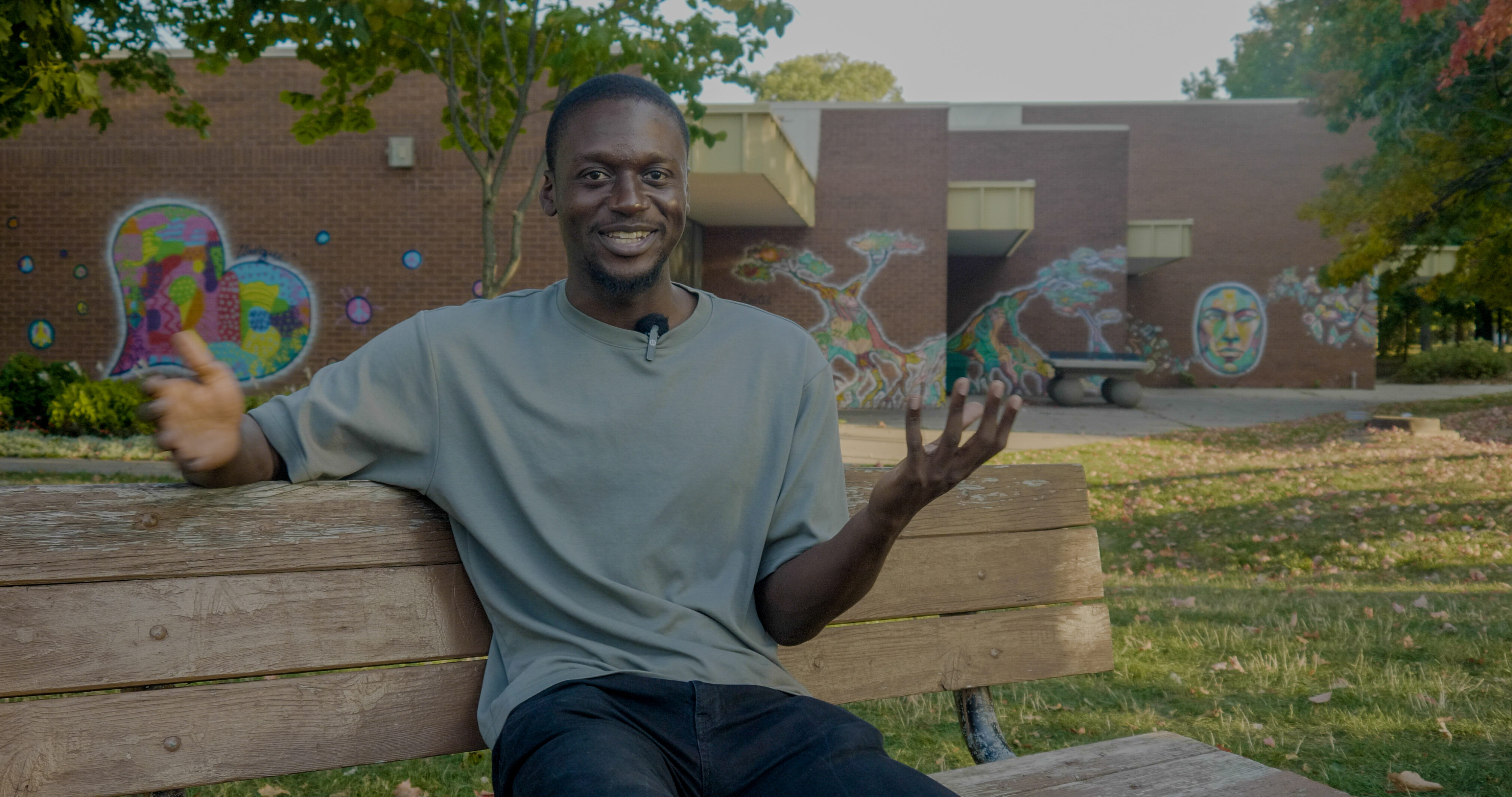THE GREEN LINE
PHOTO ESSAY
Unpacking groceries: How Torontonians navigate the food affordability crisis
We follow Torontonians from different ages, backgrounds and neighbourhoods to learn how they use food banks and community meal programs in the city.
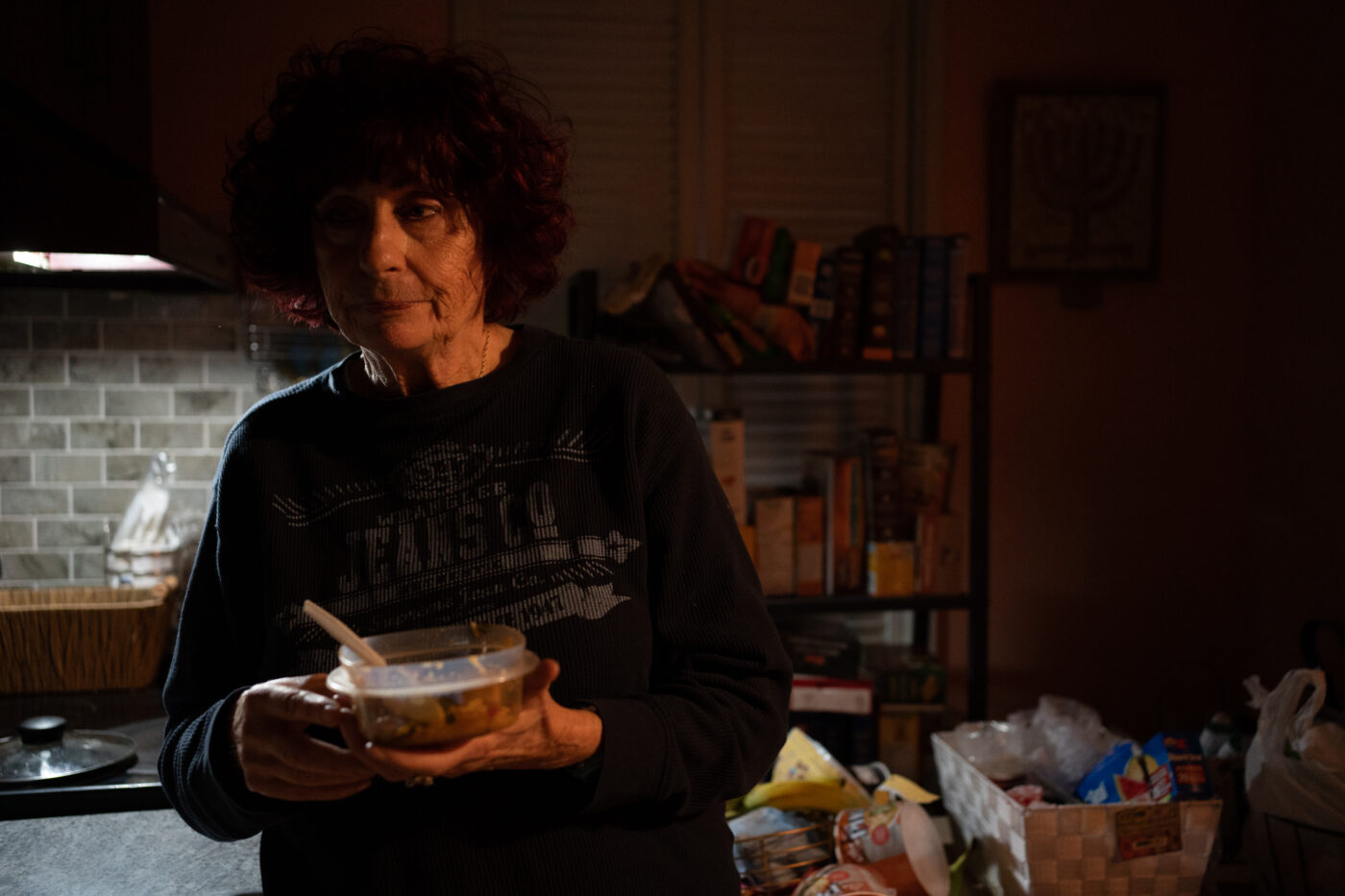
Goldie Wallensky prepares dinner with leftovers from a community dinner program earlier in the week.


ALLEN AGOSTINO
Scarborough-born photojournalist and International Center of Photography alum. Focuses on solution-based storytelling and documenting large issues through the lens of personal narratives.
Feb. 12, 2025
With files from Adele Lukusa and Amartya Smaran.
In January, Mayor Olivia Chow declared "food insecurity an emergency across the city."
From April 2023 to March 2024, food banks across Toronto saw 3.49 million visitors, one million more than the previous year.
“And more than ever, we are seeing individuals who had never considered using food banks walking through our doors and accessing our emergency services for the very first time," according to the 2024 Who’s Hungry Report.
More than half of the clients surveyed said that the high cost of living is driving them to the food bank. "Having a permanent or full-time job is no longer enough to keep people out of poverty and food insecurity," the report states.
Food banks and community dinner programs are no longer a last resort or rarity — they’re our new normal.
Freelance photojournalist Allen Agostino visited families in different Toronto neighbourhoods to learn how they use food banks and community meal programs to supplement their income and make sure there's dinner on the table.
He captured the intimate meal prepping moments that happen after a food bank visit.
Follow the journeys of fellow Torontonians as they navigate getting groceries from different food programs in this photo essay.
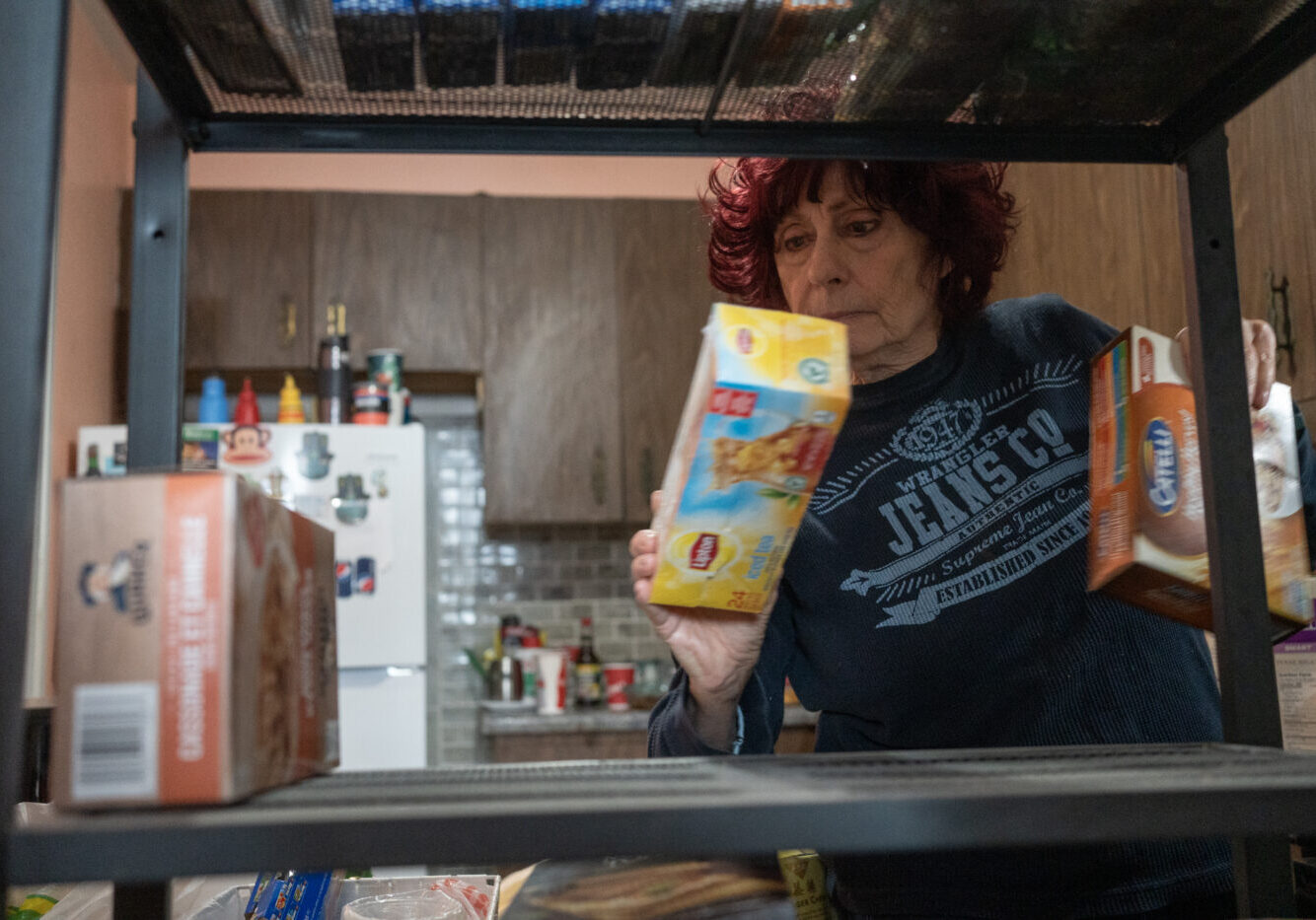
Goldie Wallensky puts away groceries in her pantry. She lives in Briar Hill-Belgravia with her partner Cad. Since they spend most of their pensions on rent, they use the North York Harvest Food Bank as well meal programs at the Out of The Cold foundation to supplement their income.
“The price of food has really gone up since the pandemic. It’s hard when you are on a fixed income," Goldie tells The Green Line. "You need to be organized and talk to people to know what programs are where and on what day.”
But a trip to the food bank is not just about a free meal for goldie and cad. "it's not only about Food banks offering physical nourishment but also about breaking social isolation," she says. “Through the years, we have met interesting and caring people."
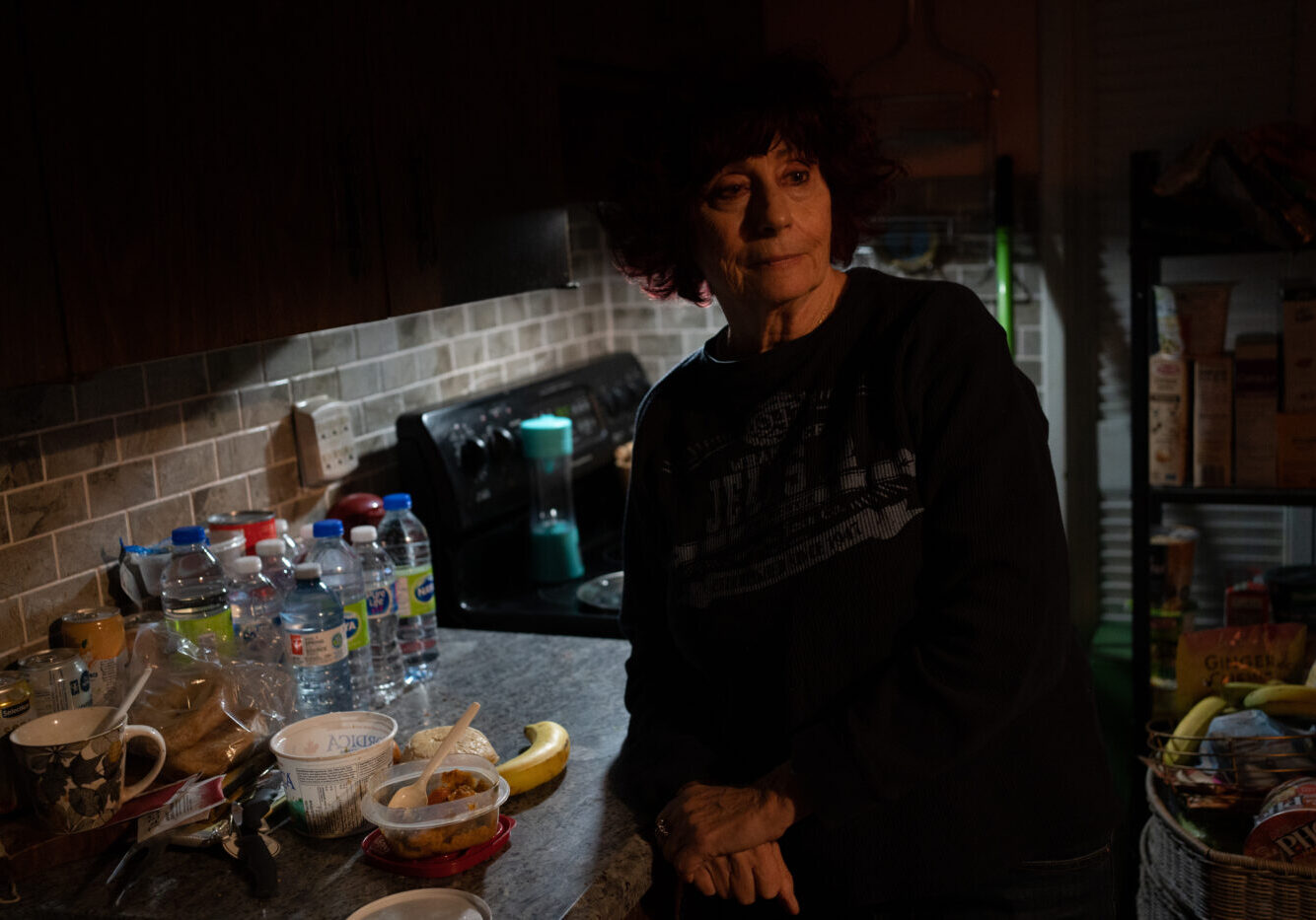
As a vegetarian, Goldie says it can be hard to find suitable food through food banks and community meal programs. Even though some places serve meatless options, the meals are not always as nutritious as she would’ve liked.
“When I eat meatless meals such as rice and macaroni, it can be either too much carbs or starch,” she says. “It’s vital to our health to save for healthier food choices.”
Goldie considers herself a food insecurity advocate, and she's particularly passionate about helping seniors access nutritious meals.
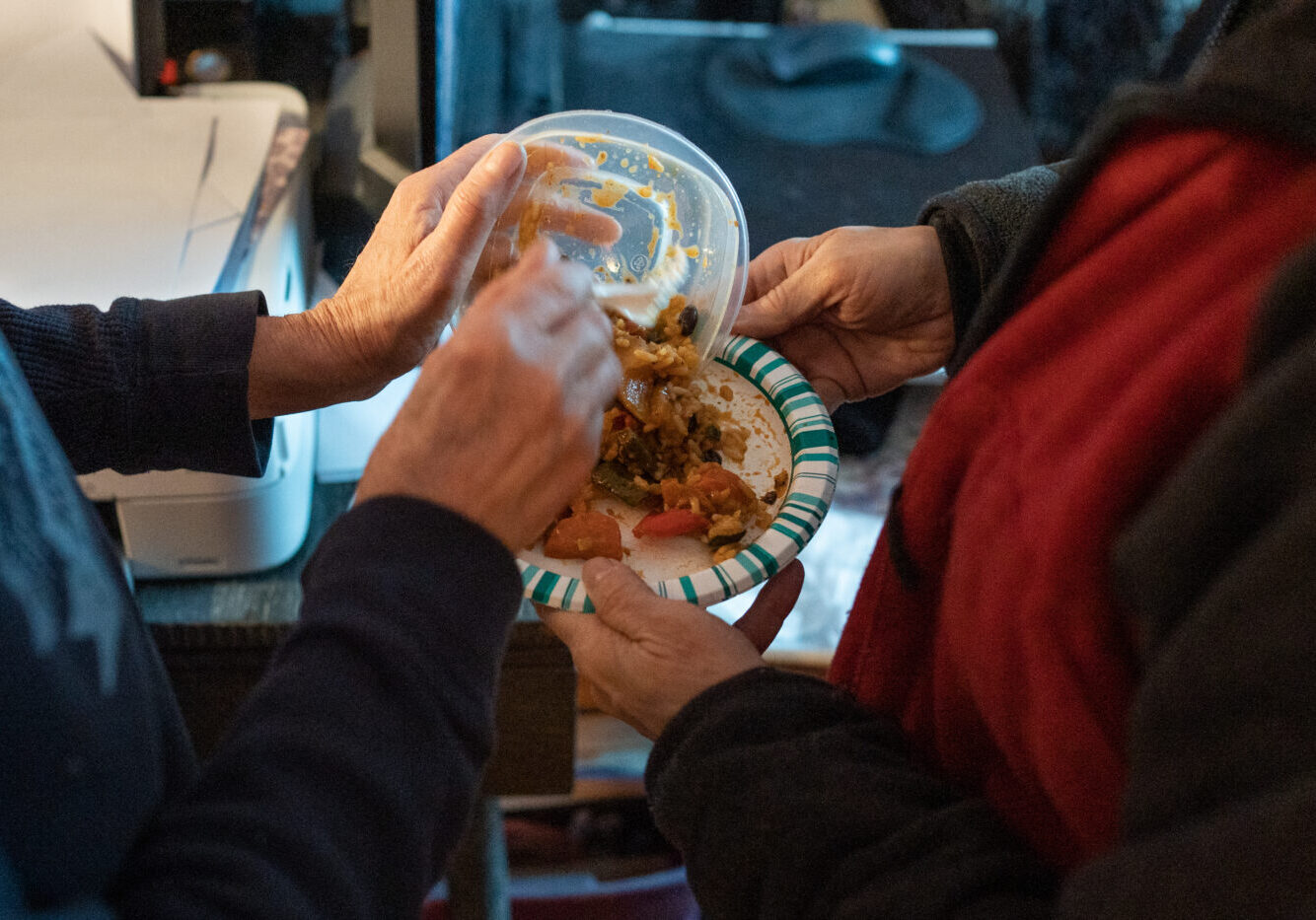
Goldie shares dinner with Cad. Their meal consists of leftovers from a community dinner program earlier in the week. When she’s offered non-vegetarian meals, Goldie gives the meat from her plate to Cad.
Sometimes, she gets bananas, apples, and oranges from the food bank. She also saves up whatever’s left of her income to buy eggs, fruits and salad fixings.
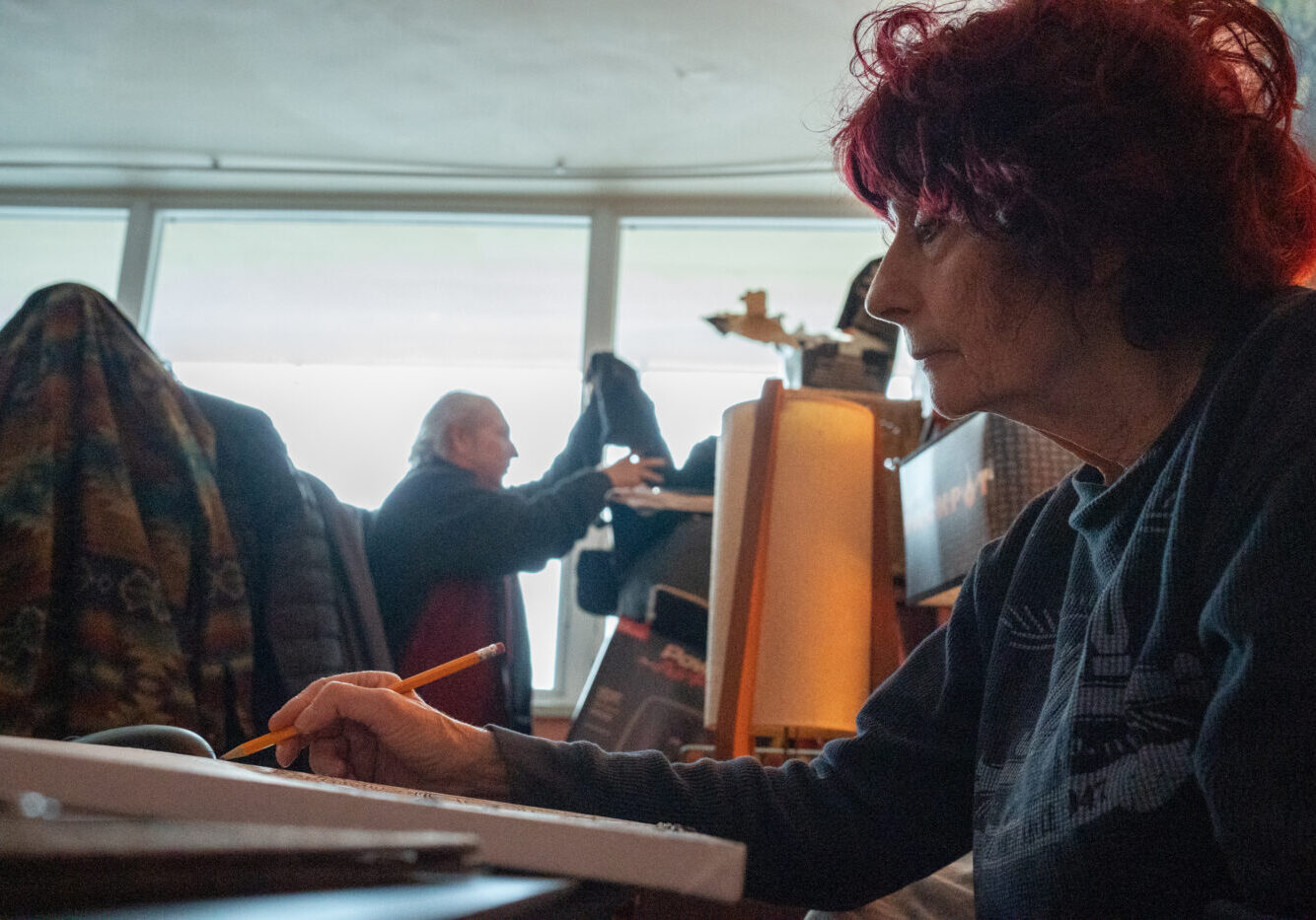
Goldie paints while Cad searches for music on Youtube. She is preparing artwork for an April show set up by the Out of the Cold Foundation.
"The profits from this art show in April will go back into feeding the people who eat at this program," Goldie says.
She adds that the key to better living is education along with health and wellness programs.
“If I knew what financial issues lie ahead of me, I would have planned differently. Now, it's my desire to educate and create.”
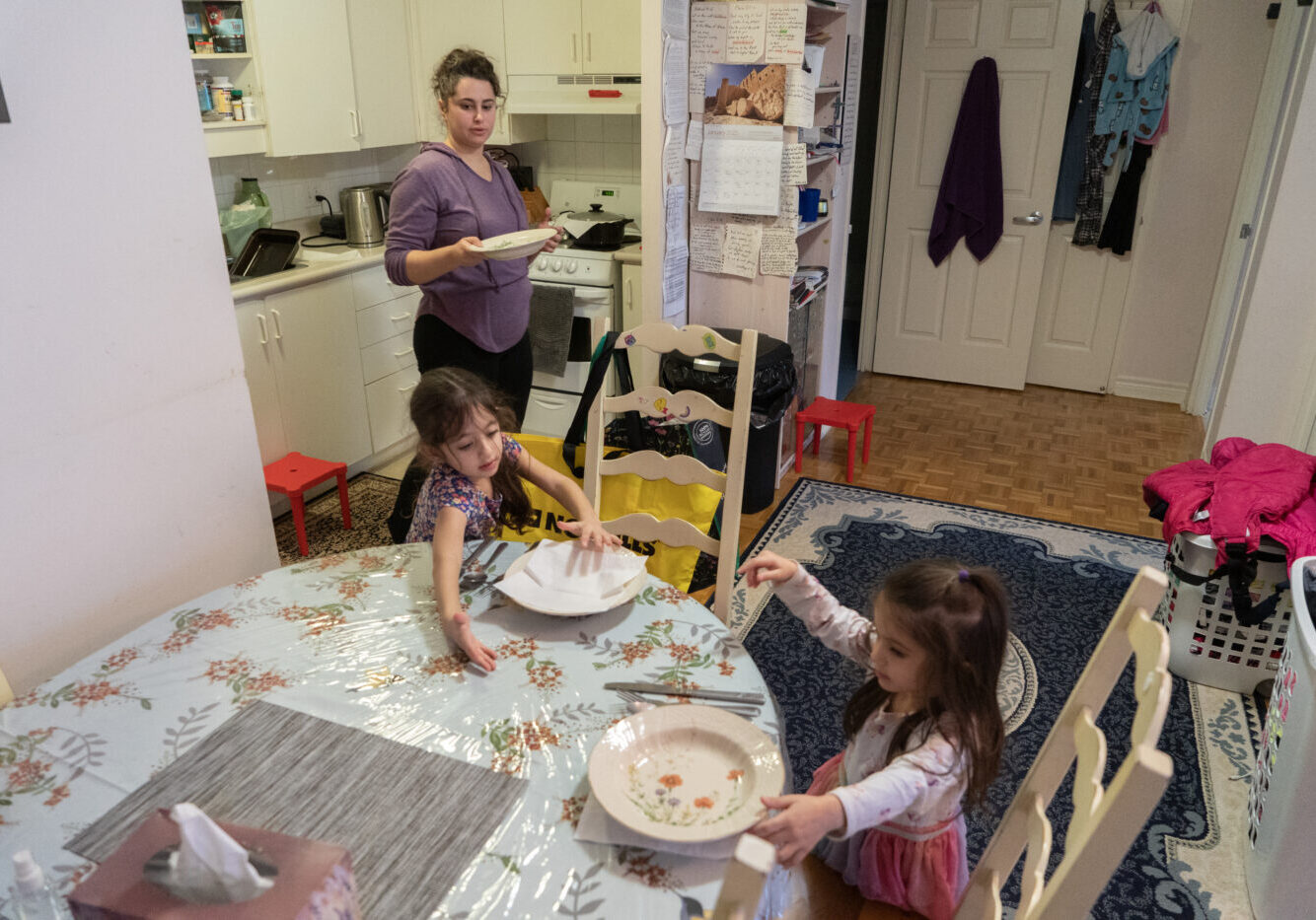
Lilianna, 5, and Katalinna, 3, help their mother Julianna Eftekhari, 30, prepare dinner in their apartment in O'Connor-Parkview, East York. They make rice and put out plates while waiting for their father Behnam, 34 to come home from work.
"The girls always help set the table for dinner. Lilianna even knows how to make breakfast and cook eggs," Julianna says.
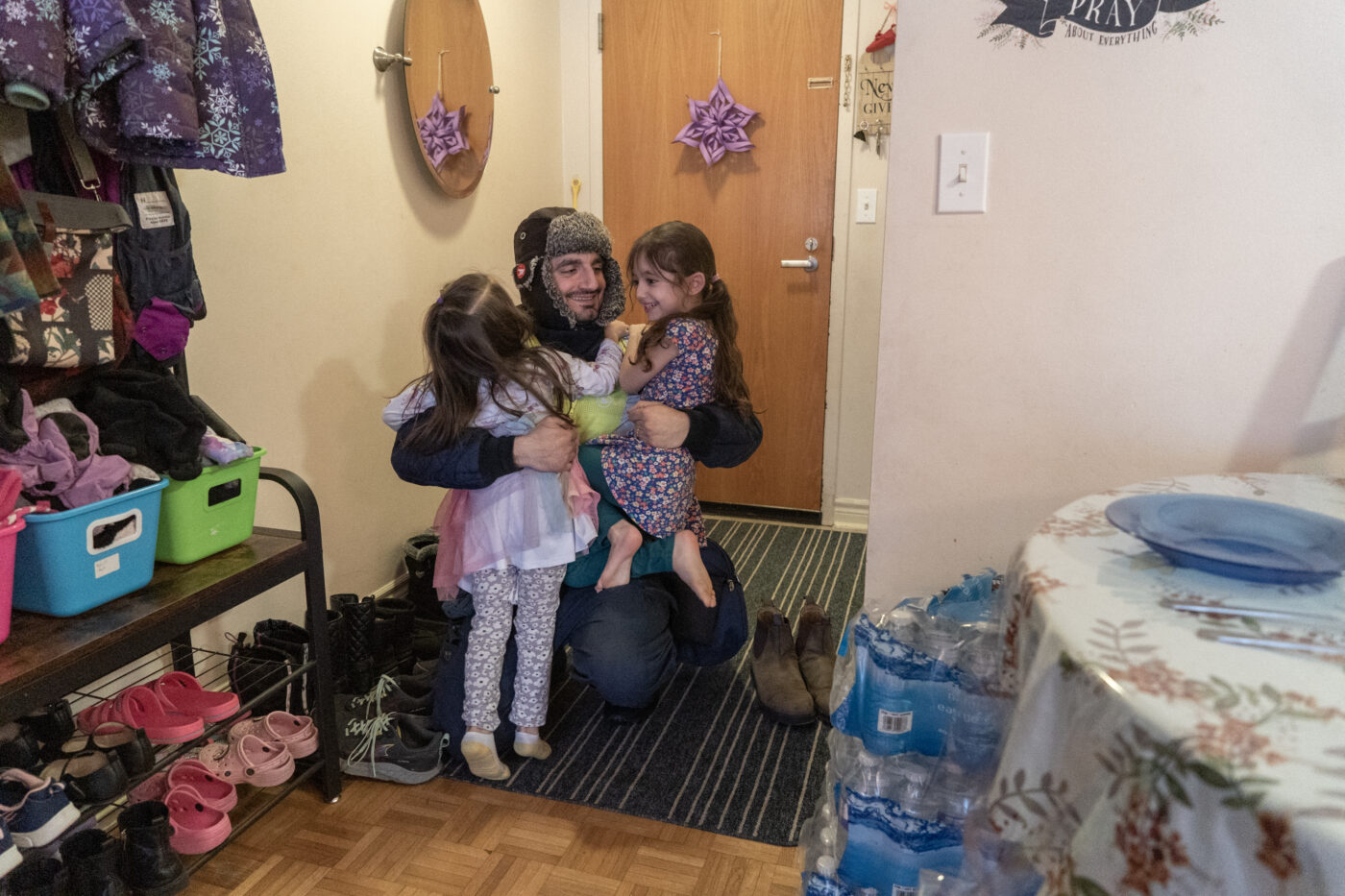
Lilianna and Katalinna excitedly greet their father Behnam as he comes home. Benham has been a Canada Post worker for eight years.
During the recent Canada Post strike last December, Behnam had to resort to driving for Uber Eats to make ends meet. However, this temporary gig didn't bring as much money.
The single-income household of four uses community dinners once a week to supplement their food expenses. It saves time and money, Julianna says. "We don't need to worry about dinner, especially when we're given extra food, fruits and veggies."
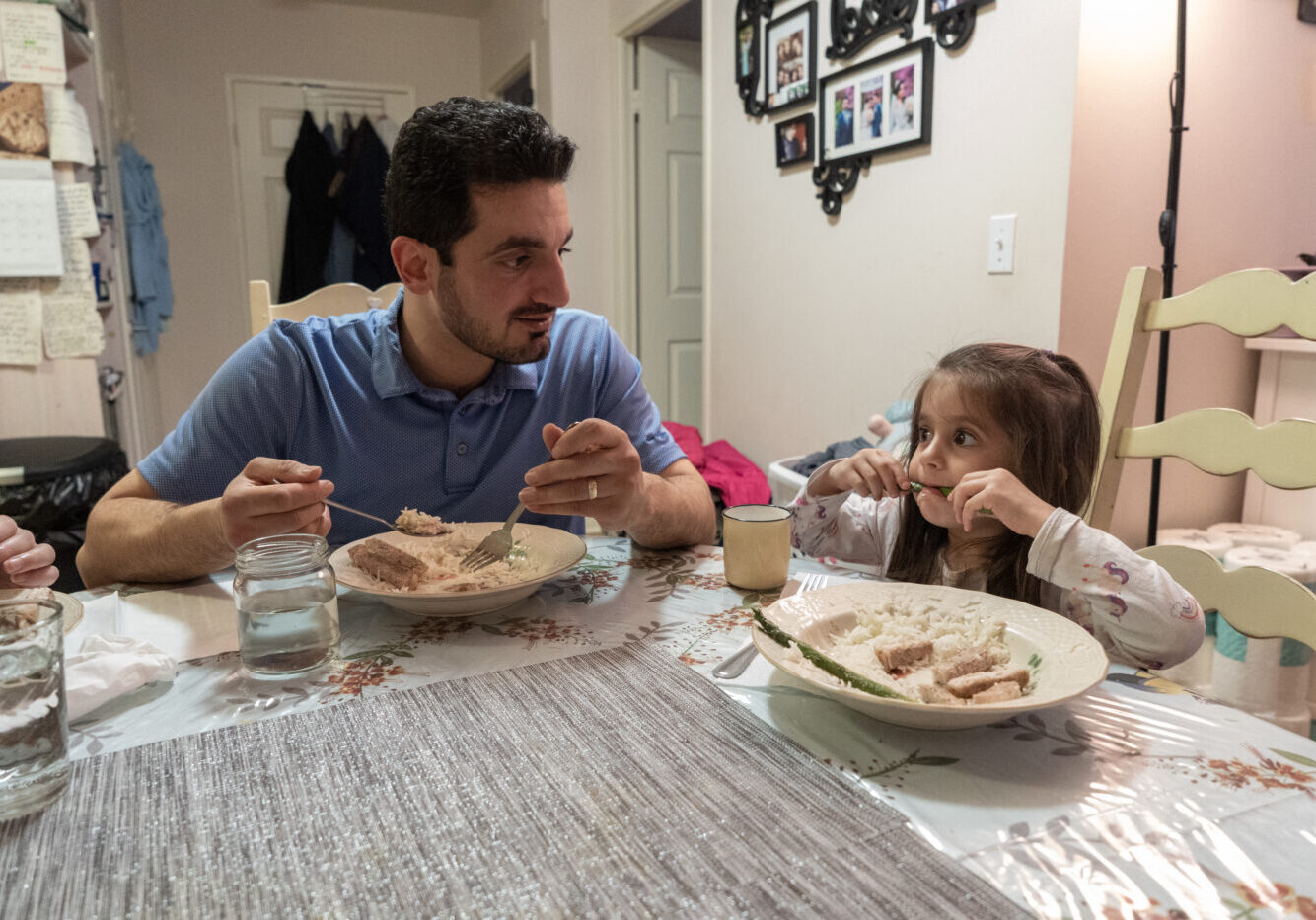
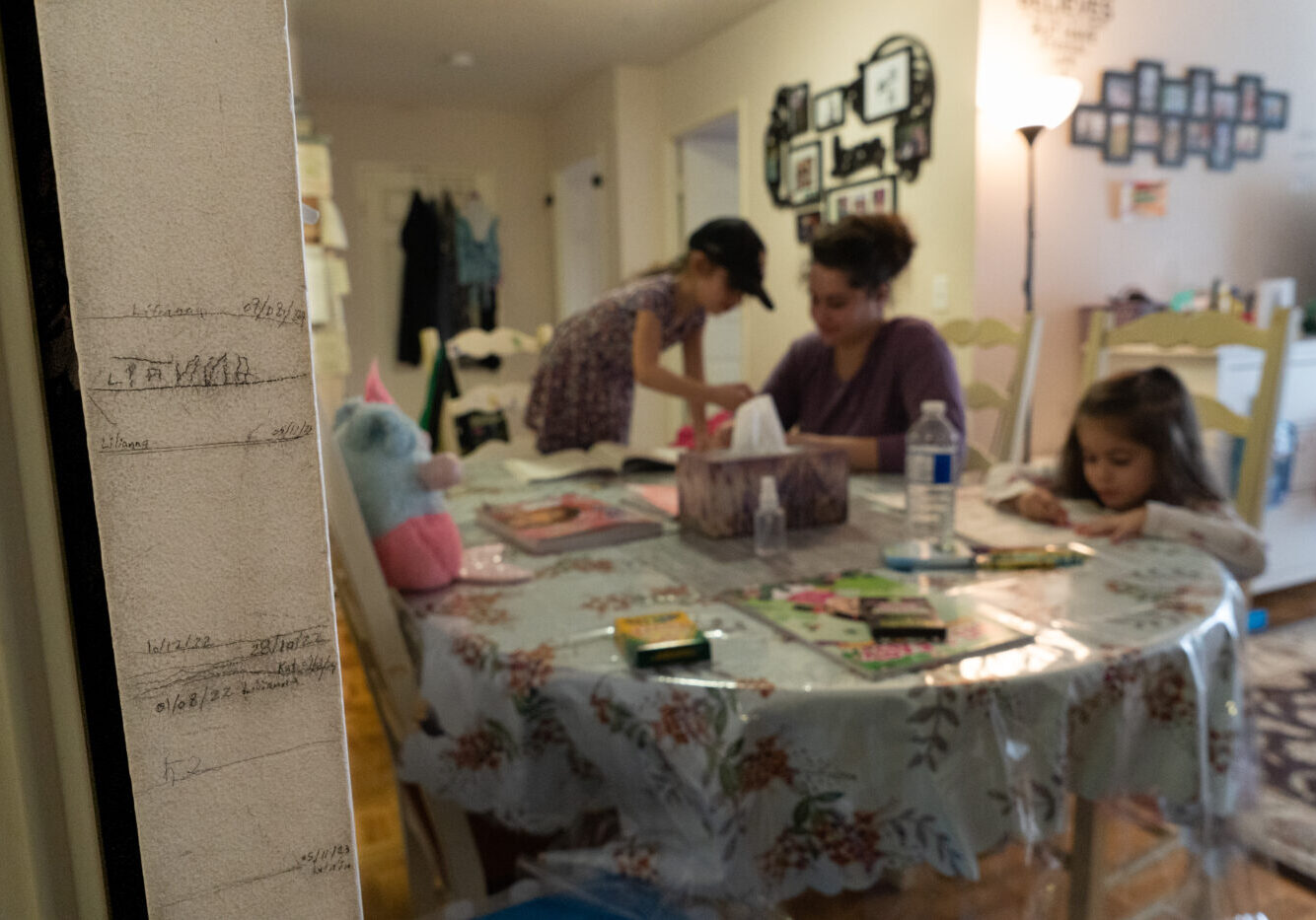
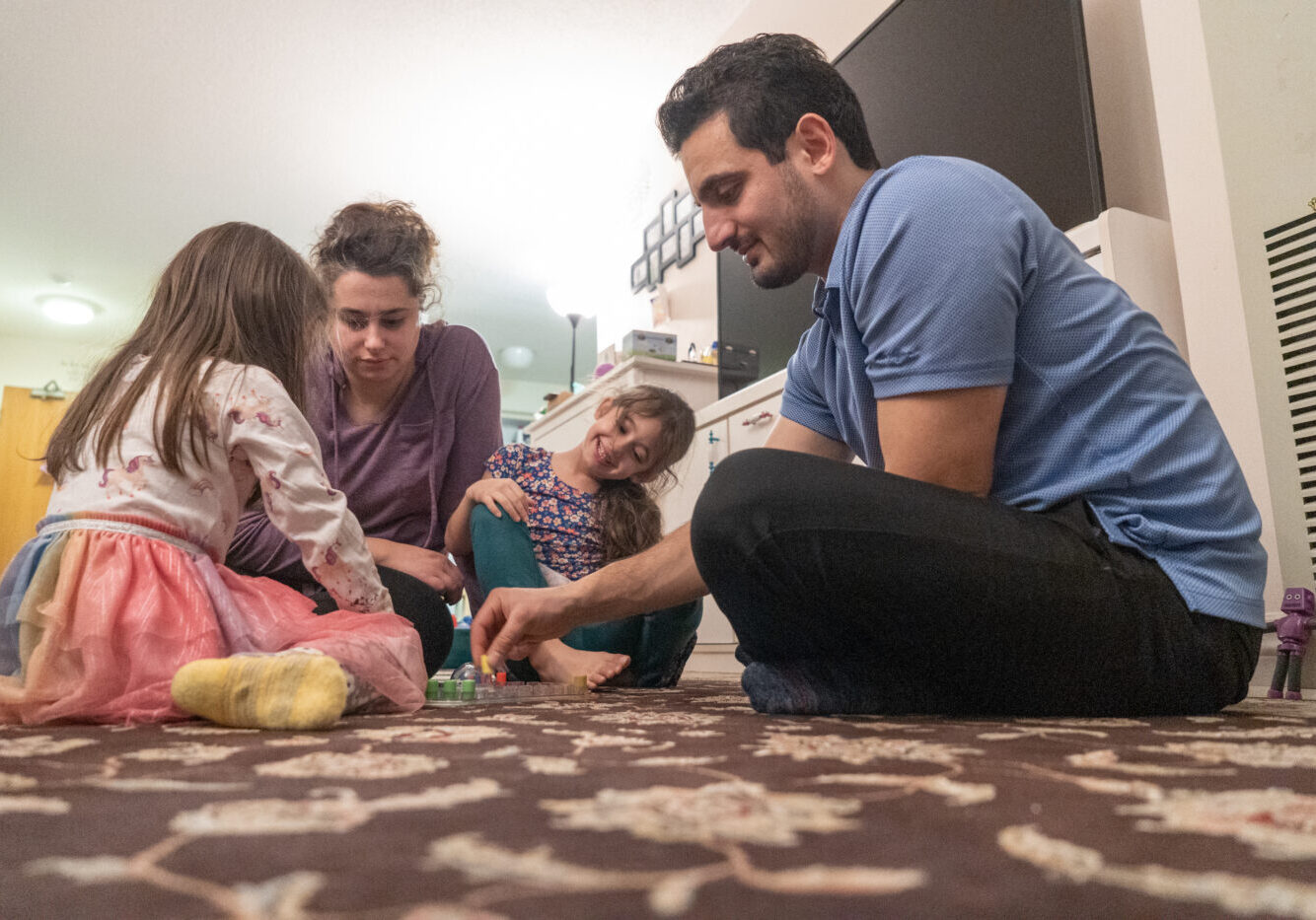
Behnam and Juliaana play with their daughters Lilianna and Katalinna after dinner in their apartment in East York.
PAY WHAT YOU CAN
Local residents can shop for discounted fresh produce year-round at the Moss Park Market.
The market, which operates out of a shipping container and ajdacent park on 260 Queen St. E, is run by Building Roots, a grassroots social venture. Every Saturday, a handful of staff and volunteers set out fresh produce crates — most of which are purchased from local farmers.
During the pandemic, the operation ran as a food bank serving people from across Toronto — but in the past couple of years, the team has reshifted the gear to the original plan: a give-what-you-can neighbourhood market.
Our video intern Amartya Smaran visited the location in the downtown core to learn how this model still helps community members afford good groceries.
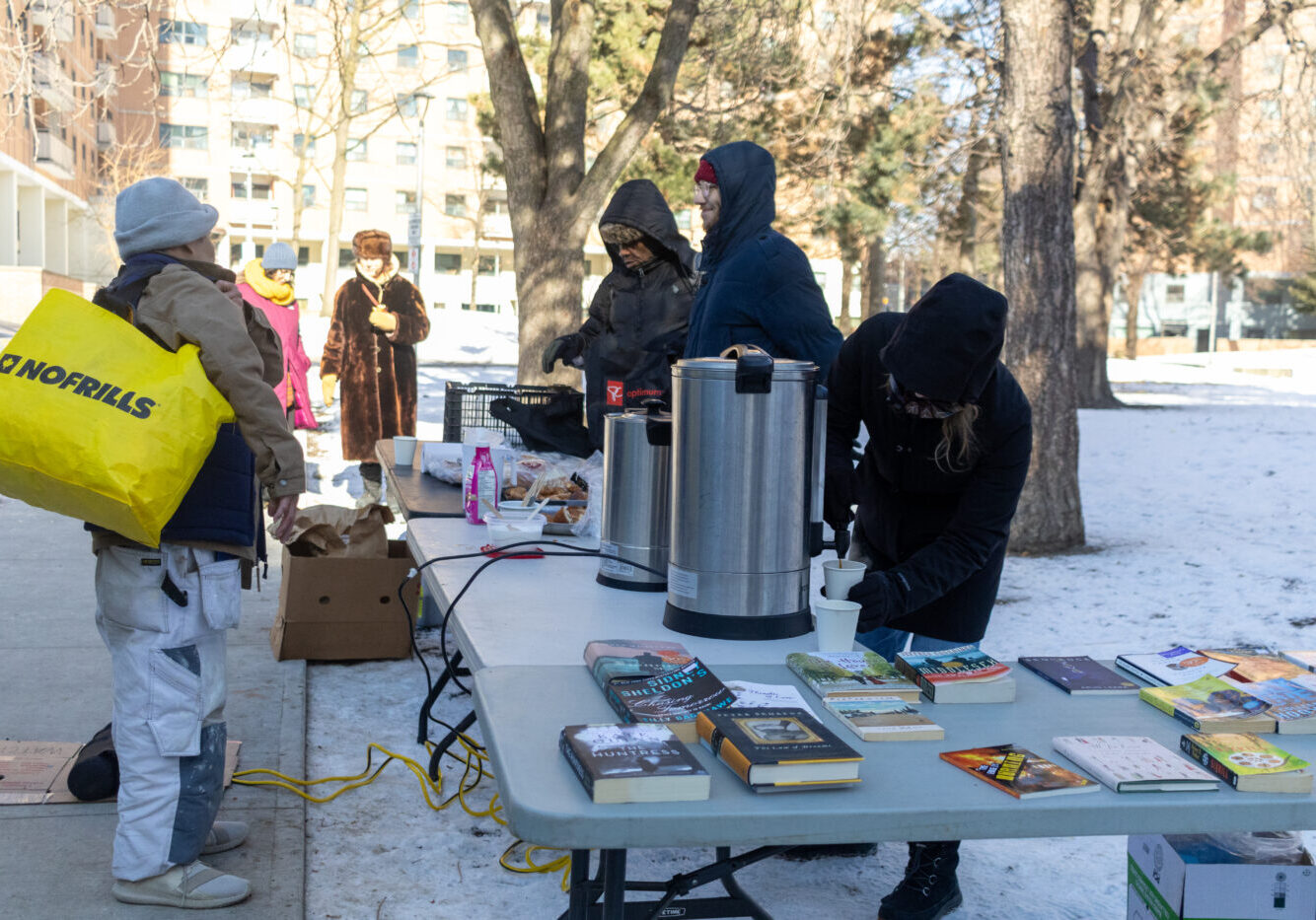
Volunteers set up a resource tables featuring everything from harm reduction supplies and housing resources to sexual health education pamphlets, as well as a BookShare table where anyone can grab a book to take home.
The last stop is usually Coffee & Conversations, a program that encourages residents to grab a coffee, tea or hot chocolate as well as some pastries and sandwiches for free. The coffee-shop like operation helps anyone who's hungry access food immediately — and it creates a friendly space where neighbours can hang out and chat.
📸: Amartya Smaran/The Green Line.
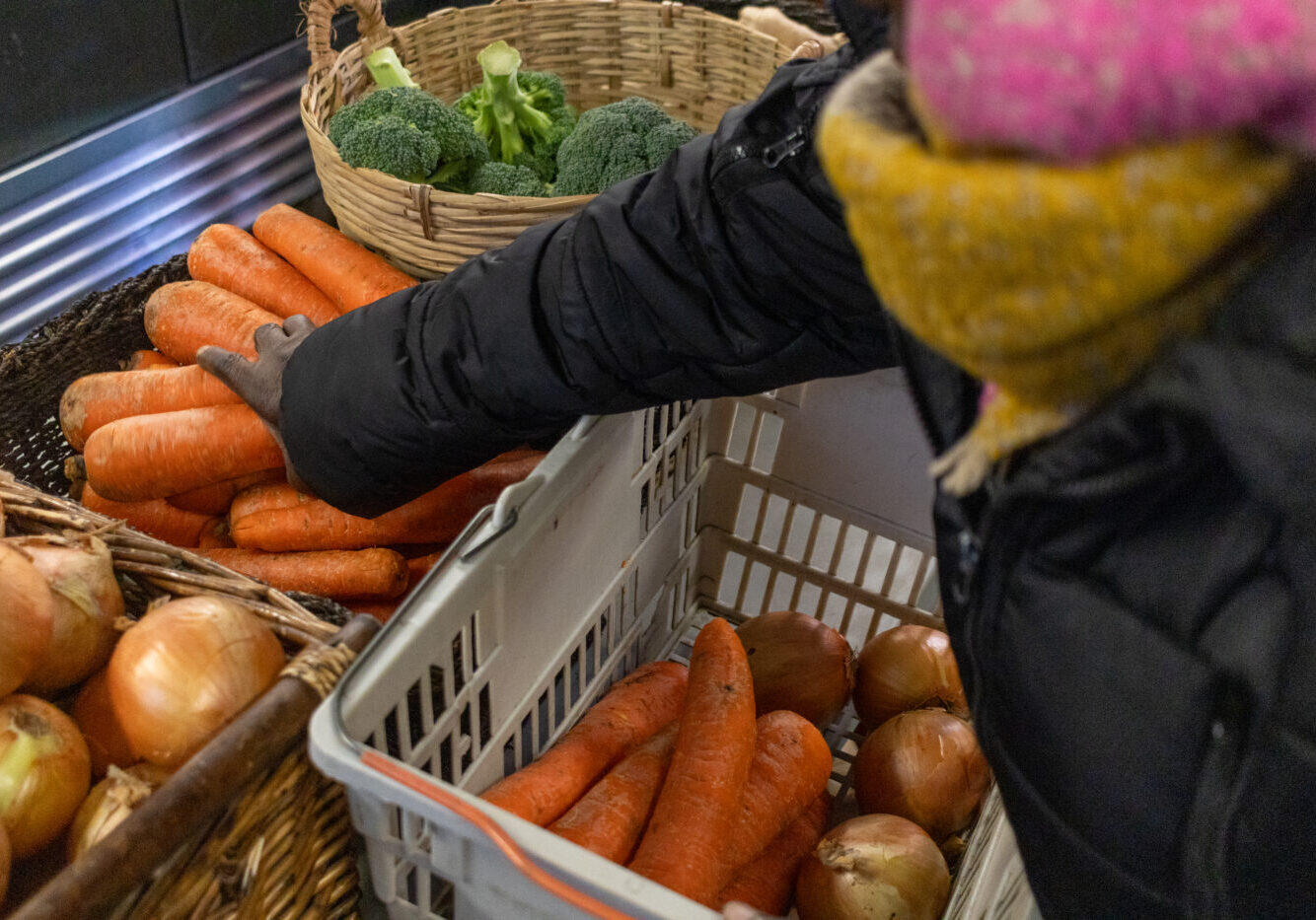
As for the discounted produce market, it features kitchen staples at suggested prices (which are half their already discounted cost.) Shoppers are free to adhere to the suggested amount — but they can pay less if the need to, or more if they can. The market will also usually have some giveaways featuring snacks or special products.
Ella Lightstone, the Food Programs manager, says that one reason why people are encouraged to pay at the market is because it empowers them to voice their preferences when it comes to the food they get — so it doesn't feel like a handout.
She measures the market’s success by people discussing the quality, origin and price of the products. She recalls a time when a shopper complained about the taste of oranges (which were at the end of the season) — and that, for her, was a win. This sparked a conversation about the seasonality of fruits and produce, the countries the come from when they can't be locally grown, and the market's role in engaging thoughtfully in the global food system.
“Everyone deserves good food,” she says, adding that good local produce should not be limited to fancy farmers markets.
📸: Amartya Smaran/The Green Line.
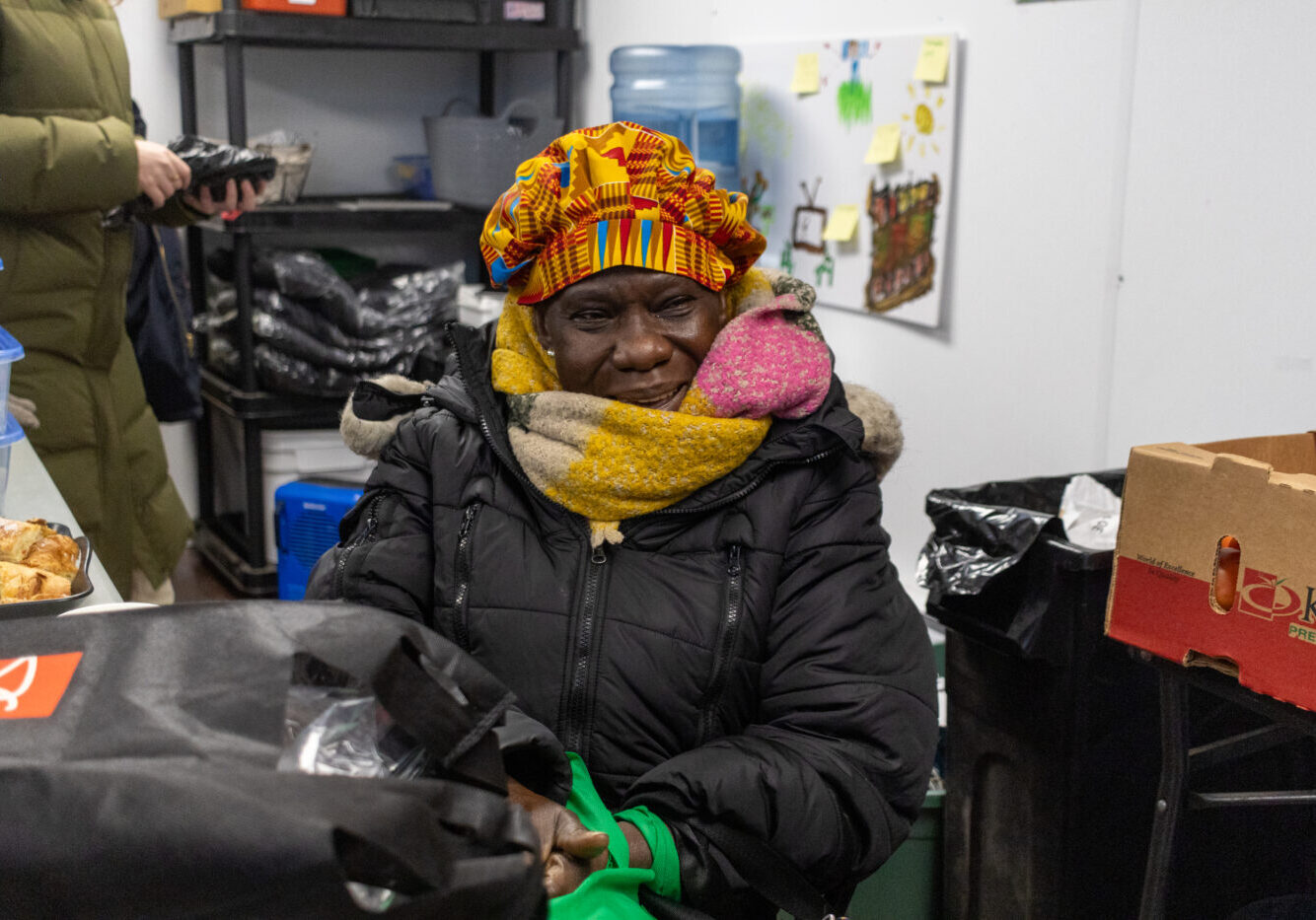
Velma Anthony, 66, has been coming to the market for years. She makes it her first stop on Saturday mornings after her night shift at work. She lives in a senior home in Moss Park, and works as a personal support worker caring for others in hospitals or their homes.
Velma has had diabetes for over 20 years so eating fresh veggies is crucial to a healthy lifestyle and balanced diet. Aside from the cheap produce, she likes the market for the community around it.
"People here and the volunteers are so nice," she said, adding that she enjoys the warm coffee as well as the educational and artistic programming that is sometimes offered at the market.
📸: Amartya Smaran/The Green Line.
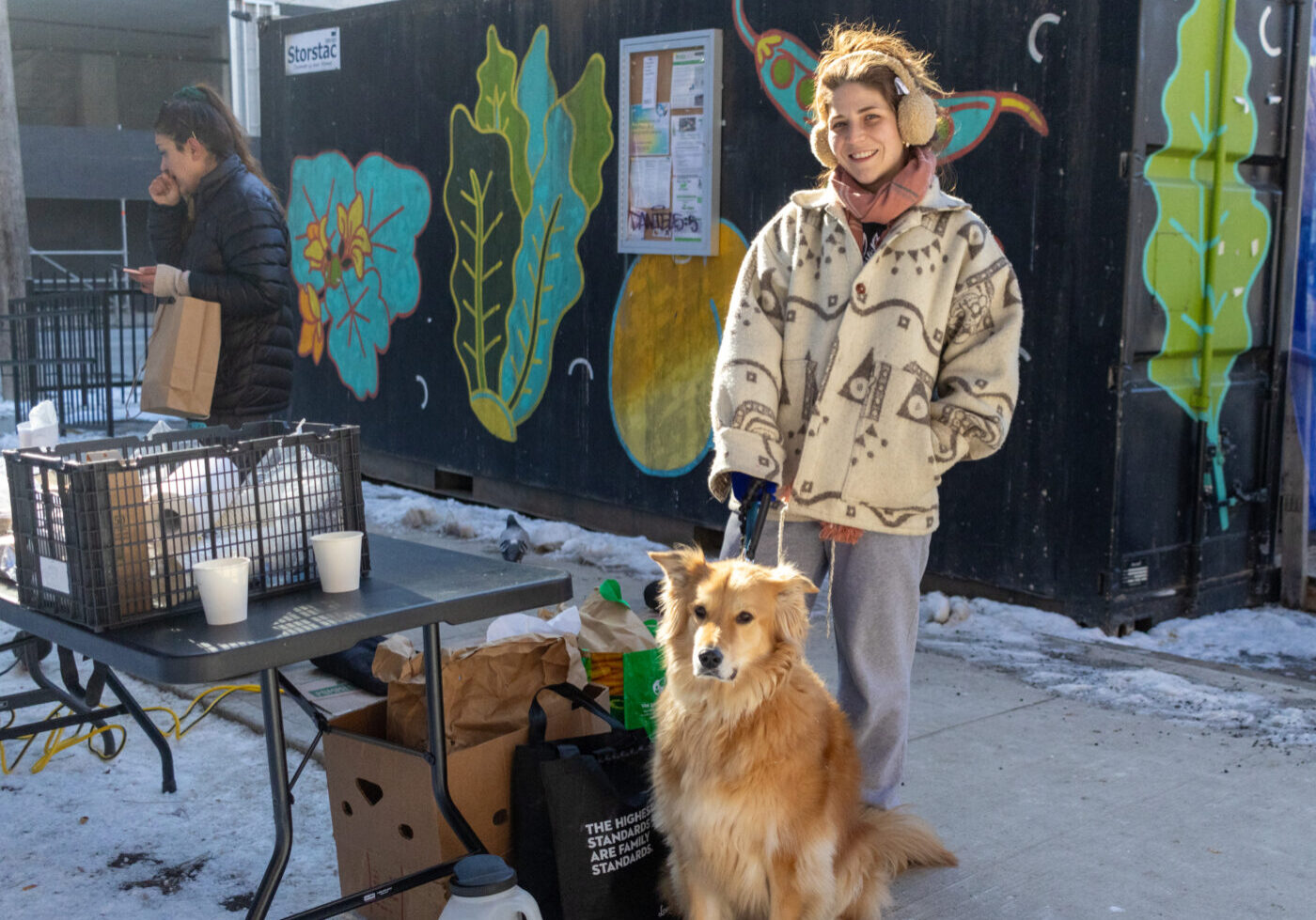
Rosalyn Tortoza, 31, picks pastries after shopping. It's only her second time at the Moss Park Food Market. She uses the Pay-What-You-Can model to buy fruits and veggies that would otherwise be too expensive for her budget (especially because she likes to have one orange per day.)
A lawyer by trade in her home country of Venezuela, Rosalyn has not been able to practice in Canada yet, despite having been in the country for close to eight years. Up until recently, she lived in Hamilton, WHERE She worked as a waitress, making $18 per hour AND RELYING ON FOOD BANKS TO SUPPLEMENT HER GROCERIES. now, she is working towards her law clerk certificate to get back into her field.
📸: Amartya Smaran/The Green Line.
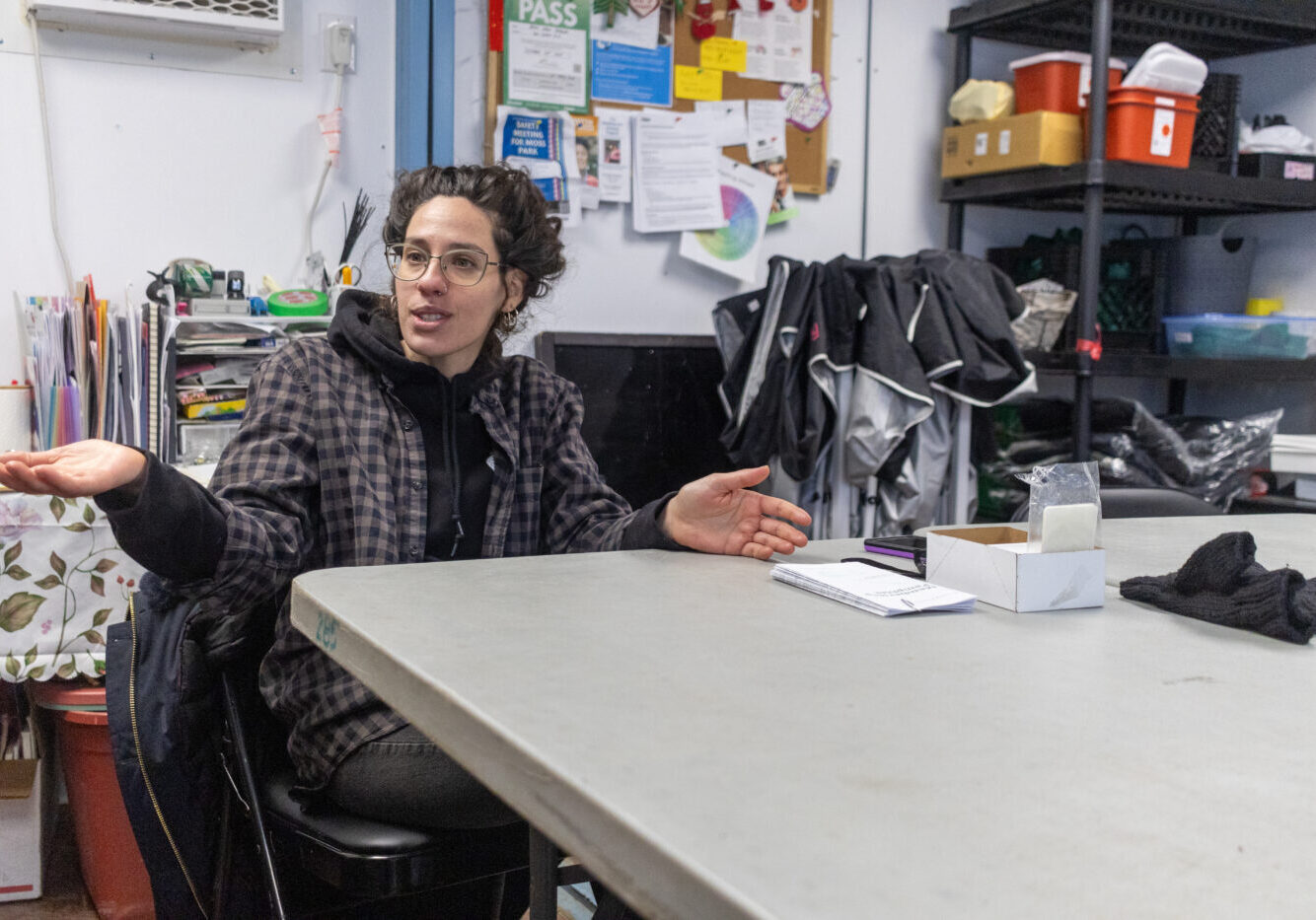
Ella Lightstone says that she tries to run the market thoughtfully, as part of a larger food system.
“The food system is a beast,” she says, explaining that the food we eat today often comes from exploitive agricultural systems that most us are unaware of. “I believe in weaving together the people, the food and the land,” she adds.
To do that, Ella dedicates one third of her small operating budget to buy producer from small local farmers. That is also why the market is more than the name implies, it's also a community hub for people to meet and grow.
📸: Amartya Smaran/The Green Line.
Fact-Check Yourself
Sources and
further reading
Don't take our word for it —
check our sources for yourself.
